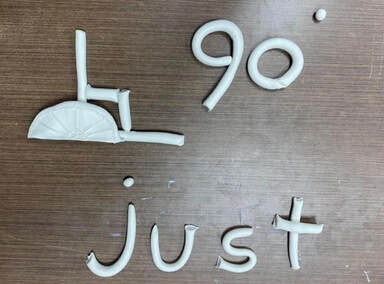|
I recently facilitated a 5 days Davis Dyslexia Correction Programme with an adult dyslexic. Diagnosed in primary school, she received short term intervention then. She is a good reader and spelling is not an issue, but struggles to comprehend what she is reading.
During the programme week, she realised what impacted her comprehension. While she reads fluently, her pace of reading was quite fast and she was not even aware whenever she made reading mistakes. It also dawned on her that she did not have a good understanding of some of the punctuation marks used. Punctuation gives meaning to what we’re reading. The lack of certainty on how each punctuation mark is used and what to do when we come across them (whether to stop, pause, continue reading) added to her confusion. Another thing that struck her was the realisation that she did not really know the meaning of some of the high frequency words (such as by, when, who, which) she encountered in reading. She identified the word “just” as being the most confusing for her and did symbol mastery (see picture below) in order to have clarity of the meaning and that resolved her confusion. “Just” means exactly, precisely. Can you see the meaning in her clay model? The protractor was used to give an exact, precise measurement of the right angle. Once she masters the punctuation marks, resolves any words that caused confusion, slows down when reading and converts what she reads into pictures, she begins to have better comprehension of and retains what she is reading.
0 Comments
Punctuation marks give meaning to what we are reading and writing. Very often, dyslexics omit or ignore punctuation marks because they are symbols, and some symbols can confuse dyslexics if they are not able to connect how the mark looks, to what it's called, how to use it, where to place it in relation to a word and what you should do when you come across the mark when reading (stop, short stop, pause or continue reading). Life would be so confusing without proper punctuation marks! Once the gaps are addressed, do something fun with your child to reinforce the learning, like getting him/her to spot and highlight as many different punctuation marks as he/she could find in an old magazine, newspaper or book. P/s: get hold of a good grammar book (with a punctuation mark explanation section) for use when instructing the child. |
Categories
All
Christina TanChristina has a Diploma in Disability Studies and is a licensed Davis Facilitator. |
|
Professional services described as Davis™, including Davis™ Dyslexia Correction, Davis™ Symbol Mastery, Davis™ Orientation Counseling, Davis™ Attention Mastery, Davis™ Math Mastery, and Davis™ Reading Program for Young Learners may only be provided by persons who are trained and licensed as Davis Facilitators or Specialists by Davis Dyslexia Association International. |




 RSS Feed
RSS Feed

